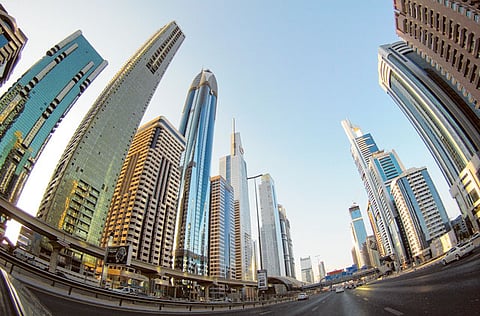Dubai’s hospitality ambitions are reachable
Gameplan of getting more visitors on longer stays looks a winning formula for emirate

With new hotel projects being announced on a weekly basis and a total of 17,000 additional keys currently scheduled for completion before the end of 2017, it might appear at first sight that the Dubai market may be heading into a period of oversupply. The extent to which this occurs will be largely dependent upon the answer to one key question — can Dubai deliver on its target of doubling visitor arrivals over the next eight years (20 million by 2020?
Many observers felt that previous targets to increase visitor arrivals and, therefore, hotel night demand were overly ambitious, but there is no doubt that Dubai has delivered upon its promises over the past decade. Back in 2004, there was a total of around 26,000 quality hotel rooms across the city, servicing some 5 million tourist arrivals. By 2013, the market had approximately doubled, to around 57,000 hotel rooms, servicing 10 million tourists.
The Dubai hotel market has performed strongly over the past decade, and is currently one of the best performing markets globally. Room-night demand has increased by 13 per cent annually since 2004 and average occupancy is expected to exceed 77 per cent during 2013.
The recently announced target of attracting 20 million tourists to Dubai by 2020, assumes an annual compound growth rate of 9 per cent. While this is below that achieved over the past 10 years, it is only natural to expect a lower rate of growth in percentage terms as the market gets larger and more mature.
The new target is clearly ambitious, but there are reasons to believe that this is achievable, given continued high levels of government support and investment to ensure the city can continue to deliver on its promises.
Tourist attractions
The major driver of growth over the next few years will be the development of additional tourist attractions (demand-generators) in the city and the continued expansion of the airport. The government has made major financial commitments in both of these areas recently and is seeking to entice more of the passengers passing through the airport (that exceeded 55 million in 2012) to stay in hotels in the city.
If this figure can be increased (by tapping into the large number of transit passengers passing through the airport or by increasing the average duration of stay), then the ambitious demand targets certainly look more achievable.
Another major factor that will influence the ability of Dubai to meet its visitor arrival target will be its success (or otherwise) in securing the 2020 World Expo. It is estimated that as many as 37 million visitors could be attracted during the six-month expo, of which around 70 per cent would be from outside of the UAE and, therefore, in the market for a hotel or other forms of temporary accommodation.
If Dubai gets the nod for the Expo (in November 2013), we can expect many hotel operators and developers to bring forward their plans to expand their room supply in the city.
In the shorter term, the supply of new hotels in Dubai is growing at around 8 per cent annually for the coming three years. Our fair case demand scenario assumes a broadly similar level of growth in room nights demand, with the result that market occupancy is likely to stay around 80 per cent in the foreseen future.
We anticipate that a key feature of the market over the next three years will be its continued maturity into a number of distinct sub-markets, each with its own supply mix and demand generators.
The city’s beach hotels have been the strongest performing sector over the past few years and there are certainly continued opportunities for leisure and resort properties in areas such as Jumeirah Beach and Palm Jumeirah. Other potential growth markets include midscale corporate hotels in Business Bay and budget hotels in more peripheral locations.
Providing that Dubai can continue to deliver on its promise to attract more visitors, there appears to be only limited risk of an over-supply of hotel rooms developing over the next few years. We expect the market to continue to provide attractive levels of return for those properties offering the right mix of location, product, brand and price.
— The writer is the CEO of Jones Lang LaSalle, Middle East & North Africa.
Sign up for the Daily Briefing
Get the latest news and updates straight to your inbox


